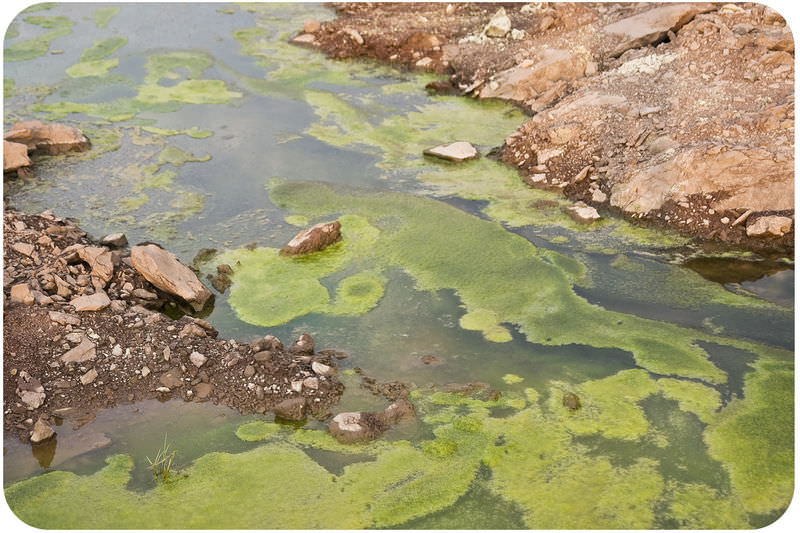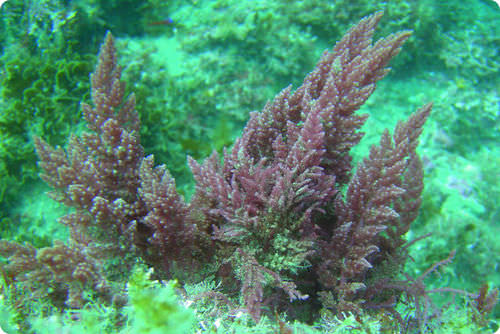6.4: Algae
- Page ID
- 2953

What is pond scum?
Polluted water can form a frothy green scum on the surface. This "pond scum" is actually a living organism, algae. The algae are plant-like protists. Usually the algae are too small to notice, but sometimes algae grow in excess because of the excess nutrients in polluted water.
Plant-like Protists
Plant-like protists are known as algae (Figure below). They are a large and diverse group. Plant-like protists are autotrophs. This means that they produce their own food. They perform photosynthesis to produce sugar by using carbon dioxide and water, and the energy from sunlight, just like plants. Unlike plants, however, plant-like protists do not have true stems, roots, or leaves.

Most plant-like protists live in oceans, ponds, or lakes. Protists can be unicellular (single-celled) or multicellular (many-celled). Seaweed and kelp are examples of multicellular, plant-like protists. Kelp can be as large as trees and form a "forest" in the ocean (Figure below).

Plant-like protists are essential to the ecosystem. They are the base of the marine food chain, and they produce oxygen through photosynthesis for animals to breathe. They are classified into a number of basic groups (Table below).
| Phylum | Description | Approximate Number of Species | Examples |
|---|---|---|---|
| Chlorophyta | Green algae (related to higher plants) | 7,500 | Chlamydomnas, Ulva, Volvox |
| Rhodophyta | Red algae | 5,000 | Porphyra |
| Phaeophyta | Brown algae | 1,500 | Macrocystis |
| Chrysophyta | Diatoms, golden-brown algae, yellow-green algae | 12,000 | Cyclotella |
| Pyrrophyta | Dinoflagellates | 4,000 | Gonyaulax |
| Euglenophyta | Euglenoids | 1,000 | Euglena |
Summary
- Plant-like protists are autotrophs, meaning they make their own food.
- Plant-like protists include algae, kelp, and seaweed.
Explore More
Use the resources below to answer the questions that follow.
Explore More I
- Plant Protists at http://www.youtube.com/watch?v=o5ESHXKGBvA (4:03)
- How much of the total photosynthesis on the globe is carried out by phytoplankton? What does this mean for aquatic ecosystems?
- How are the flagella of dinoflagellates arranged?
- What organisms have dinoflagellates as symbiotes? Why are dinoflagellates important to these organisms?
- How do bivalves respond to red tides? What does this mean for humans?
Explore More II
- Red Tides at NOAA: http://oceanservice.noaa.gov/facts/redtide.html.
- What is a red tide?
- Are all algal blooms harmful? Explain your answer.
- How can some algae be harmful?
Review
- How are some protists similar to plants?
- How are plant-like protists different from plants?
- What are some examples of multicellular plant-like protists?
- How are plant-like protists essential to their ecosystem?

